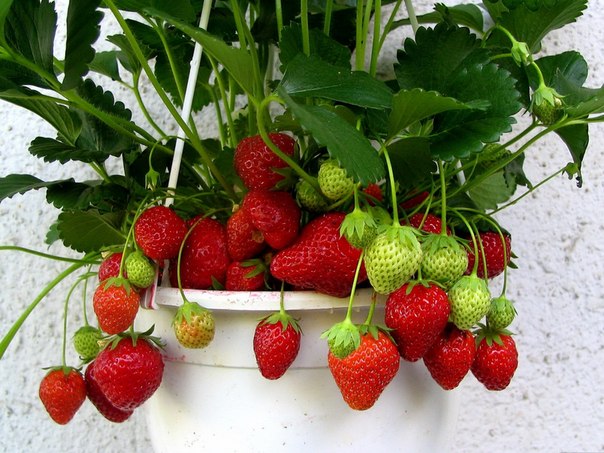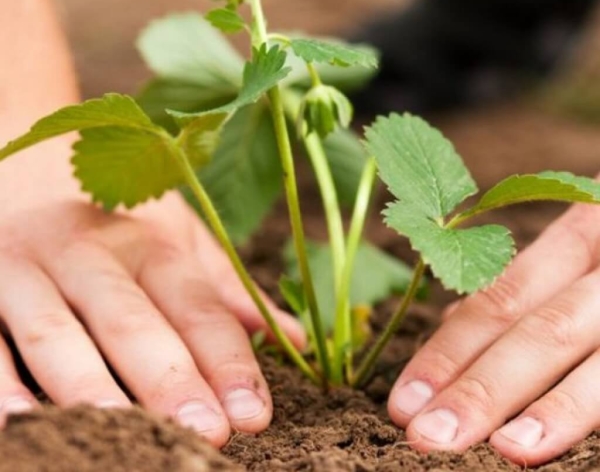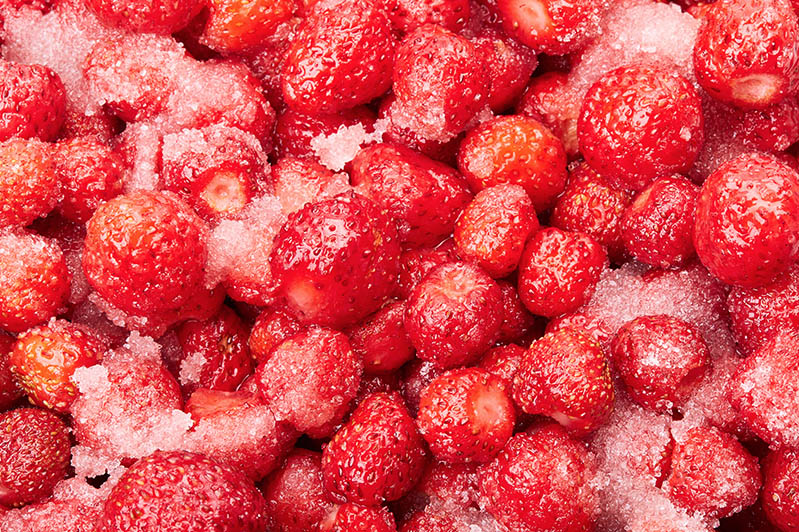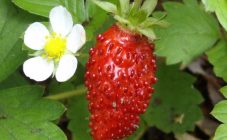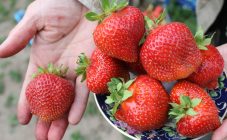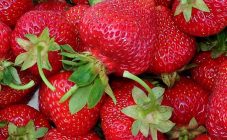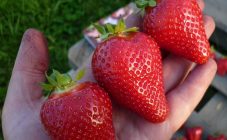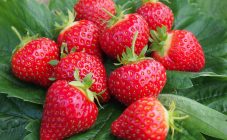Garland is considered one of the best remontant high-yielding strawberry varieties. Its popularity and demand are explained by its high and stable yield, excellent taste and attractive appearance.
Features and characteristics
Strawberry Garland was bred by the Russian agricultural technician, Honored Doctor of Agricultural Sciences, Galina Fedorovna Govorova in the early 2000s.
This unique woman has been breeding new varieties of strawberries all her life. All the varieties obtained by her are highly resistant to pests, diseases, as well as the ability to grow and bear fruit in different climatic conditions.
Strawberries Garland are grown not only in personal plots, but also in parks, as well as on the territory of ornamental gardens. Often the cultivar is grown in pots and is hung upright. Thus, inimitable cascades are created.
The culture bush has a spherical shape. The leaves of the plant are distinguished by medium density, ideal smoothness, and also a rich green tint. As for the height of the bush, the plants of this variety do not grow too tall, reaching only 20 cm in height.
Strawberry fruits are rather large and oval in shape. When ripe, the strawberry acquires a reddish-pink hue and a moderate sheen. Inside, the ripe berry is light red, dense and juicy.
Garden strawberry Garland has an average degree of drought resistance. Therefore, if you plant this variety in a region where hot and dry summers prevail, strawberries will bear fruit less efficiently. To achieve good yields, you need to provide the plants with proper care and suitable climatic conditions.
If strawberries are provided with appropriate climatic conditions and proper care, fruiting will continue throughout the season. The yield will be approximately 1.2 kg of berries per bush. The bushes will be covered with flower stalks throughout the season.
Berries of this variety are classified as dietary. Their one hundred grams contains only 46 kcal. Strawberries can be eaten both raw, and you can make jams, juices and liqueurs from them, as well as freeze them in order to enjoy the incredible taste and aroma of fresh berries on winter evenings. The berries of this variety are used to make candied fruits, marmalade, as well as excellent homemade wine.
Care and cultivation
Seedlings are grown from seeds. You can buy the seeds of the Garland remontant strawberry in the store. The last winter month is best suited for preparing seedlings.
Grains of varietal strawberries must be prepared for planting. To do this, they are soaked in a weak manganese solution for 2-3 minutes. This is necessary in order not only to saturate the seeds with potassium, but also to disinfect them. Then the seeds are placed in the soil, pre-fertilized, loosened and roasted in the oven for several hours. The grains are immersed a few millimeters into the soil and be sure to carefully moisten it after that.
According to the descriptions of the variety, the garden strawberry Garland grows quickly and well, while it does not require special and careful care. As soon as the seedlings grow up, this happens around the beginning of April - mid-March, they will definitely dive. As soon as the temperature becomes positive and the air warms up, the seedlings are transplanted into open ground. Before planting, it is recommended to fertilize the soil with humus and ash, dig it up and form beds, the height of which does not exceed 30 centimeters. After planting, the plants are watered with warm water. As practice shows, this strawberry variety takes root very well and very soon begins to put on a mustache, on which flowers appear. Then, as a result of the fact that they self-pollinate, berries are obtained. It is possible to grow a variety of strawberries Garland both on a dumping bed and in pots.
In order for strawberries to quickly take root, as well as to obtain a high yield, you must adhere to the following recommendations:
- planting seedlings in the ground in the spring;
- when planting, it is imperative to observe the distance between the holes, which should average about 75 centimeters;
- landing pits should not be deeper or less than 45 centimeters;
- each hole should have a small mound;
- after planting, the top layer must be compacted, and the seedlings must be watered;
- watering should be done daily for the first 10 days after planting.
Water the strawberries in small doses. Cool water is great for irrigation. It is imperative to take into account that the variety does not like excess moisture, as a result of which the taste of the berries changes, they become watery and sour.
If everything is done correctly, as a result, fragrant and tasty berries will grow, which can be enjoyed both fresh and made from them strawberry jam, juices, compotes, strawberry juice, jams and much more. Also, this variety of strawberries can be frozen, both in whole and in chopped form.
Advantages and disadvantages
Strawberry Garland has a huge number of advantages, which include:
- high productivity;
- long fruiting period;
- high resistance to diseases;
- frost resistance;
- normal tolerance to high temperatures;
- unpretentiousness and ease of breeding;
- the attractiveness and beauty of the bushes;
- excellent taste;
- the content in berries of a huge amount of vitamins and minerals.
Like any other variety, Garland has certain disadvantages, although there are relatively few of them.
The main disadvantages of the variety include:
- average level of drought resistance;
- the likelihood of being affected by fungal diseases;
- insufficient immune protection against powdery mildew.
It doesn't take much knowledge and effort to grow and get a good harvest of the Garland. It is enough for a gardener to follow simple rules for its care, especially since the culture will self-pollinate itself and please with a wonderful harvest throughout the season.

